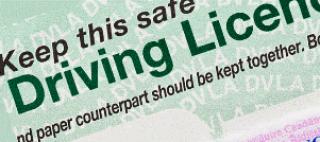A1 MiDAS Minibus Training from UKGRS

Important Please Read:
It is essential that an organisation that intends to permit their employees or volunteers to driver their minibuses undertsnad the legislation relating to driving minibuses.
Differences exist between organisations that hold charitable status and those that are commerical in nature. It is important that an organisation understands what legislation they have to fulfill for their staff to be able to drive their minibuses.
Category D1 101 entitlement:
Minibus drivers who passed their car driving test before 1st January 1997 will normally have a D1(101) - minibus, not for hire or reward - entitlement on their licence. This will remain on the licence until it expires when the driver reaches 70 years old or unless removed by DVLA, usually for medical reasons. Even though the licence restriction says ‘not for hire or reward’ these licence holders can drive a minibus operated under a section 19 / 10B permit without additional conditions. Drivers who hold a category D1 101 on their driving licence can be paid directly to drive a minibus or volunteer to drive it.
Category B entitlement:
Drivers who passed their driving test from 1 January 1997 were not granted the D1 101 entitlement on their licence and they will only have a B entitlement. If a driver with only a category B entitlement can comply with all of the following conditions they may drive, on behalf of a non-commercial body for social purposes but not for hire or reward, if they:
The two conditions that cause most problems are the vehicle weight restriction and not being able to pay drivers. The fourth bullet point above is normally interpreted as meaning that the driver is a volunteer. However, there is a legal opinion that where an employee does not have driving as part of their job description and they receive no more pay as a result of their driving duties; they could be considered to be meeting the condition set out above. This opinion has not been tested in a court but has been accepted within the voluntary sector.
The additional 750kg weight attributed to 'specialised equipment' is the maximum allowance permitted to directly offset the additional weight of any 'specialised equipment' which is intended for the carriage of disabled passengers, therefore, any allowance claimed over the 3,500kg limit must be attributed to this equipment. The gov.uk website provides an example of 'specialised equipment' as being a ramp however, operators and drivers must ensure that any 'specialised equipment' stays on the minibus for this concession to apply, if there is no 'specialist equipment' on the minibus then the Maximum Authorised Mass cannot exceed 3,500kg.
Maximum Authorised Mass
Both operators and drivers need to take care with the maximum authorised mass of any vehicle they are operating or driving. The Maximum Authorised Mass, or Gross Vehicle Weight as it is also known, is the maximum carrying capacity of the vehicle; this is the vehicle when it is full of diesel along with all the passengers and driver. It may be possible to overload a vehicle where heavy wheelchairs are carried or where the payload is small. For more information please see our Advice Note on Minibuses and Overloading available in the Registered Users area of the Advice and Information section. Where any of the above conditions cannot be met, the driver will need to pass a second driving test in a minibus including, medical and theory, hazard perception and practical tests. This will gain them a full PCV D1 entitlement.